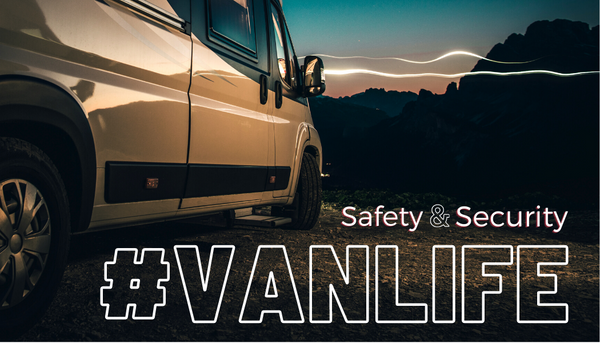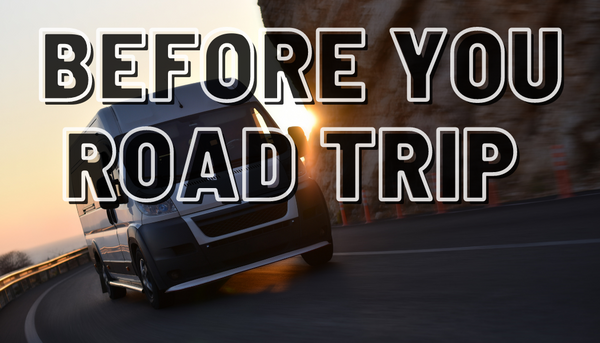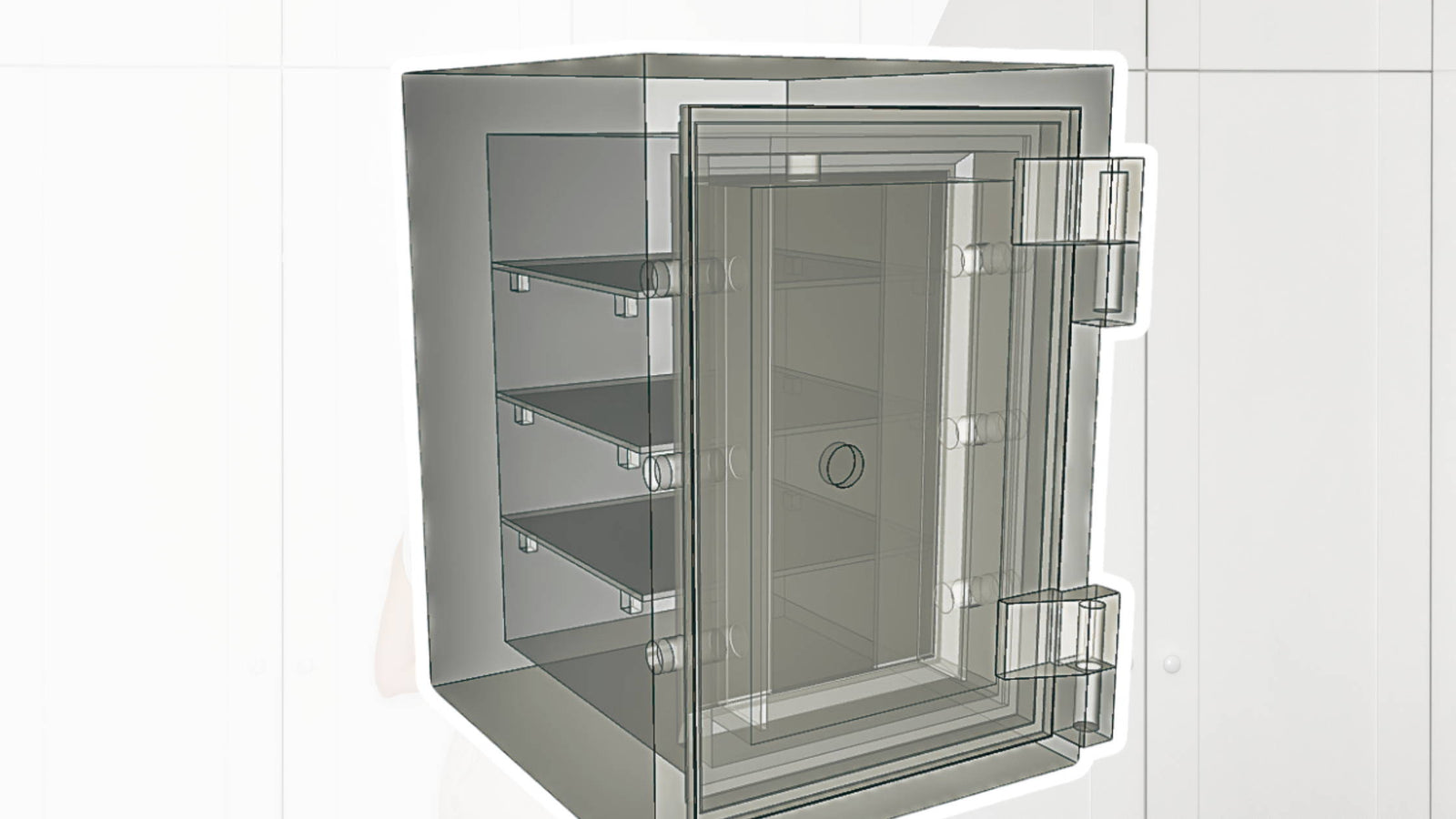
There is a pleasure in the pathless woods,
There is a rapture on the lonely shore,
There is society where none intrudes,
By the deep Sea, and music in its roar:
I love not Man the less, but Nature more. . .
—Lord Byron
Wouldn’t it be great to escape the stressful city life and explore nature out in the wide-open spaces? Money, career, endless obligations, constantly arguing neighbors… I mean, who else can’t wait to get all of that out of their mind?
Believe it or not, you’re not alone. If you are on social media at all, you may have noticed the hashtag #Vanlife trending. Van life is commonly associated with grand picture-perfect travel destinations and glamorous selfies on social media, but the reality of this lifestyle is often far different than it is portrayed.
But, just like you, many people are sick and tired of the big smoke and demanding economy. And such yearning gave birth to the #vanlife with road trips and the boondocking bandwagon.
Boondocking generally refers to free camping, usually out in the boondocks or countryside.It’s a term in the Vanlife community and involves an RV of some sort. It’s all about taking a break, exploring breath-taking scenery, taking the time to introspect, and creating priceless memories.
Isn’t that liberating?
But don’t go packing your stuff and rushing out the door just yet. I know you wanna do itWalter Mitty style (grabbed his office suitcase and is in Greenland at sundown), but haste is waste. Having no proper knowledge and preparation is the recipe for a disaster.
So, hold on, my daredevil friend.
First, let me guide you in the right direction⸺ before hitting the road and during your adventure. And since you’re boondocking to lose your troubles and not your valuables, I’ll tell you why vehicle safes will (not may) protect your stuff from bandits and you from fines.
Let’s drive to it!

Before you road trip and boondock
For a fun trip and experience, safety should be at the top of your checklist. Otherwise, things could go south fast. And if you’re not prepared for it, that anti-stress adventure will turn into a stressful disaster. You don’t want that.
So, to avoid such mishaps, preparation is key. Here’s how you do it.
1. Prepare yourself
This one is crucial especially if you’ll be the one behind the wheels. In which case, mental clarity, physical coordination, and overall wellness are vital.
Thence, before your trip, workout and go for a run (cars break down so how’s your legs?). Get a good night's sleep. Energize yourself with healthy food. And not last nor least, cut back the weed and whiskey⸺ safety over ecstasy, my friend.
2. Prepare your vehicle
Once you hit the road, your vehicle will be your home away from home. Thus, make sure to check every nut and bolt and that it’s ready for the long haul.
Can’t figure out what to check?
Keep this acronym in mind:

BLOWBAGET=Battery, Lights, Oil, Water, Brake, Air, Gas, Engine, Tires
More importantly, learn basic car maintenance. Have a spare tire or two and know how to install it. Bring an extra gallon of gasoline and know where and how to pour (crazy that many people still don’t know).
You see, you can drive a Ferrari or the best RV, but if you don’t know the basic mechanics at least, your miles are counted.
Pro tip: To save money, purchase your gas at the coolest time of day since it’s at its densest.
3. Plan your itinerary and know the rules
Spontaneous road trip and boondocking may sound exciting… until you come face to face with danger. Before you know it, you’re in no man’s land surrounded by outlaws. And let me tell you, it ain’t like a Hollywood movie with a happy ending and no cowboy to save the day.
Let’s not wait until it gets real, shall we?
If you’ll be doing a road trip for days, it pays to book accommodations in advance (unless you plan on sleeping in your vehicle). Know the safest routes, where the least traffic is, and the closest police/hospital in case of an emergency.
And for boondocking, as much as you’d like to just go with the wind, at least know where the allowed parking spots and campgrounds are. And speaking of which, theUnited States Forest Service (USFS) has established rules for dispersed camping.
Moreover, always pay attention to weather forecasts. Flash floods are very common in many states and take 200 lives yearly. So, be careful⸺even a drizzle can accumulate into massive currents in just a matter of minutes.
Pro tip: Let your loved ones know about your trip and when you’re expected to be back. In case of a car breakdown or emergency, help can be dispatched to your predetermined route.
4. Stockpile your survival essentials and tools
Since your vehicle is your second home particularly when boondocking, it makes sense to have all the essentials in it. That includes food, water, shelter, med kit, and means of entertainment.
a. Food
Look for the following:
- Nutrients (full of vitamins, minerals, and fiber)
- Weight to calorie ratio (highest calorie content with the least weight)
- Shelf life (who knows how long you’ll be out there)
- Preparation (requires minimal effort and resources such as water)
- Taste (breathtaking view plus mouth-watering food… yes please!)
Some of the go-tos for both boondockers and hikers alike are protein bars, nuts, meat jerky, instant oatmeal, and freeze-dried food.
b. Water
At least 1 gallon of water per person per day ⸺ half a gallon for drinking and half a gallon for cleaning.
c. Shelter
Although your vehicle already provides a roof over your head, it’s wise to bring extra means of shelter in case you have (or want) to sleep outside. Hence, include a tent/sleeping bag, hammock, mattresses, and blankets in your supply.
d. Medications and first aid kit
If you or someone has an ongoing medication, see that it’s addressed (ask for advanced prescriptions if needed). On top of that, always have a first aid kit handy⸺ out in the wild, a minor cut can become fatal if not treated early.
And with Covid-19 still lurking, pack extra masks, disinfectants, and toiletry.
e. Tools and equipment
Whether you’re a handyman or not, it’s always better to have the tools with you and not need them rather than need them and not have them.
- Vehicle repair kit (your car isn’t fail-safe)
- Physical map and compass (smartphones die and GPS go haywire)
- Multitool (Leatherman or Victorinox, preferably)
- Flashlight and headlamp (‘cause no street lights in the woods)
- Whistle, flares, and mirror (for signaling and finding those jiggers on your back)
- Cordage/rope (the use is only limited by your imagination)
- Chains (for towing and extra traction when driving on ice or mud)
- Lighter/matches (for cooking and igniting hokey-pokey bonfire)
f. Entertainment
Bring books and download music, movies, or podcasts beforehand because wildlife can’t afford the internet bill. Unless you found the epiphany that nature provides a better connection than Wifi. (Let it sink in)
Road and boondocks safety
So, you’ve already done the necessary preparations. All your bags are packed and your vehicle is stuffed⸺ you’re ready to rock and roll. That being so, let’s now talk about road safety and boondocking etiquettes.
Driving safety tips
Drive with care… life has no spare! Read that again and take nothing for granted.
1. Keep your eyes on the road and avoid distractions
According to theNational Highway Traffic Safety Association (NHTSA), more than 3,100 people were killed in accidents attributed to distracted driving.
Operating phones and eating on the go can easily take your focus off the road. And while chit-chatting can uplift everyone’s mood, keep it minimal. Better yet, if you’re the driver, let others do the talking. Tendencies are, you’ll be tempted to do non-verbal gestures and turn your head oftenmaking you miss road dangers.
2. Make stops and take breaks often
It’s always best to have a substitute driver you can rotate with to avoid exhaustion and highway hypnosis. And if you’re feeling tired or sleepy, there’s no shame in taking a quick nap.
3. Avoid pulling over on the dark side of the road
Unless it’s an emergency, it’s best to wait for the next stopover. But if you really have to, be wary of your surroundings and light the area with a lamp or flashlight.
4. Respect other motorists and road signages
Human emotions heighten while driving. That said, be considerate while maintaining alertness.
5. Make sure your gas is plenty (>50%) between exits
Or if you have an electric car, see that the battery doesn’t fall near critical level.
6. Never drive impaired
It’s simple. If you drink like a fish… swim, don’t drive.
7. Always keep your headlights and windshield clear
Hitting the dirt road can be fun but do wipe the mud and dust off afterward.
Pro tip: Take it easy. Aggressive driving (speeding, rapid acceleration, instant braking) can lower your gas mileage by up to 40%.
Boondocking/camping etiquettes
1. Park with ample distance from other RVers or campers
What’s the point of escaping the crowded city if you’ll only find yourself jam-packed in the boondocks? You just replaced buildings with RVs, didn’t you?
So, respect other people’s private space and don’t block the beautiful view. Beautiful view? Yes. Just like that scenic Anza-Borrego Desert State Park ⸺ the largest park in California and home to amazing flowers and trails.
2. Don’t ruin the sound of silence
Do party in the boondocks discreetly. Also, use your generator only if necessary and during the day to avoid disturbing others. You don’t wanna be frowned upon by those who love to hear crickets sing and invested in solar energy, do you?
3. Let there be darkness
Not everyone thrives in the light. Some people enjoy the solitude in the dark forest. Respect that. Keep your lights minimal because you don’t wanna see what’s going on inside the other RV’s window. Or do you?

How to keep your vehicle and valuables safe
TheFBI’s Uniform Crime Reporting (UCR) Program said that ±721,885 vehicle motor thefts happened nationwide in 2019, wherein $6.4 billion was lost.
Alarming, isn’t it?
No biggie if you take security seriously and incorporate the following.
1. Mind where you park
Just like when pulling over, park somewhere well-lit and easily accessible.
2. Don’t leave your vehicle running unattended
Whether you’re just grabbing a quick snack or taking a photograph of that majestic sunset, thieves only need a second to hop in and go.
3. Always lock your doors and windows
You don’t want the Sasquatch to reach for that banana thru your window, do you?
4. Keep your valuables out of sight
Don’t see a single soul around? That’s what thieves want you to believe. And once you become complacent and your vehicle vulnerable, there go your valuables. Thus, store them somewhere hidden.
In your glove compartment? If it’s just your favorite underwear, why not!
But for your cash, laptop, or that Christopher Columbus’ golden compass, it should be somewhere dustproof, fireproof, waterproof, and thief-proof, don’t you think?
Let’s talk about that.
5. Secure your valuables in portable safes and vehicle gun safes
Thieves can break your door and window open but not a high-quality safe.
Being an armed citizen, a vehicle gun safe can prevent both theft and firearm-related emergencies. Just beware that, even with a concealed carry license, additional laws may apply to firearms in vehicles which vary by state.
Furthermore, portable safes take up almost no space and can be tethered (and you should) to a fixed part of your vehicle. Vehicle gun safes, on the other hand, are way lighter than regular vaults. So, no worries about your gas mileage.
And here’s the best part.
Unbreakable safe purchased from a reputable expert merchant? Man… you’ll be the road’s summa cum laude of vehicle security. You’re gold!
Buckle up and grab the wheel!
Prepare, hit the road, boondock… repeat.
Life isn’t meant to be confined within the office space. And when you listen to the voyager spirit within, nothing can stop you⸺ even danger will dare not emerge as long as you follow the directions above.
Remember…adventure might hurt you, but monotony will kill you.
Bon voyage!
Related Content
- 4 Quick Access Bedside Gun Safes
- How to Fly with Your Guns the Smart and Legal Way (TSA Tips For Gun Owners)
- The Safe by Mykel Hawke (Survival Expert)
- How to $urvive the Next (Imminent) Hyperinflation






